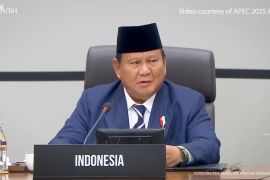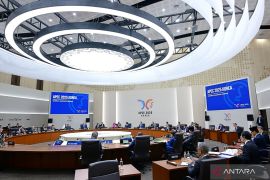Economic growth in APEC is now projected to decline by two percent in 2020, up from its initial forecast of a 2.5-percent contraction in November, bringing the total output loss to US$1.5 trillion, according to a new updated report by the APEC Policy Support Unit, as noted in its release received here on Friday.
"Governments around the region continue to mitigate the economic fallout of the COVID-19 pandemic with a series of stimulus measures, including liquidity support and loan moratoriums extended to businesses as well as cash handouts and wide-ranging subsidies to households," Denis Hew, director of the APEC Policy Support Unit, expounded.
"These measures stimulate domestic consumption, as economies reopen gradually," Hew stated.
The new report also projects economic growth for the APEC region at 5.7 percent in 2021 and 4.1 percent in 2022.
Despite the slight uptick in the 2020 economic growth and a relatively optimistic outlook for 2021 and 2022, the report notes that growth will be uneven across APEC economies, with the speed and strength of the recovery largely determined by the effective management of the pandemic and successful vaccination programs.
"Different levels of access and schedules as to when at least 60-70 percent of the population will be vaccinated will eventually affect the timing of economic and border reopening, translating into diverging speeds of economic recovery across the region," Rhea C. Hernando, an APEC Policy Support Unit researcher, who updated the report, stated.
The report notes that several APEC economies could achieve widespread vaccination as early as the latter part of this year, with 10 other members by mid-2022.
"There is an urgent need for closer cooperation between policymakers and the private sector to educate the public about the efficacy of each vaccine in order to combat misinformation and encourage higher vaccine uptake," Hernando stated.
Challenges persist for APEC to address the unequal impact of the pandemic on various segments of society, especially the poor, women, and the youth.
In terms of trade, the region recorded a better performance in the third quarter of 2020, with the value of merchandise exports and imports declining at a lower rate of 2.4 percent and 5.7 percent, respectively, from as much as 16 to 17 percent in the previous quarter.
This improved performance is in line with global trade, supported by a 50-percent growth in trade of medical supplies since April 2020.
Meanwhile, commercial services continued to tumble, largely resulting from major losses in the transport and travel sectors. For the January-September 2020 period, commercial services plunged by a cumulative 22.9 percent for exports and 24.5 percent for imports.
Nevertheless, the rise of remote work and work-from--home initiatives also drove the demand for home office and communication equipment, thereby giving trade in this sector as well as apparel and textile a boost.
"It is crucial for member economies to sustain the fiscal and monetary stimulus in order to prevent further livelihood losses, but equally important is to also take advantage of digital opportunities," Hew stated.
"When fiscal space allows, economies can invest in digital infrastructure, green jobs, and new technologies while also ensuring the upskilling or reskilling of the workforce," he added.
New Zealand is leading APEC’s efforts towards a more sustainable, resilient, and inclusive recovery, guided by its theme for APEC 2021, "Join, Work, Grow Together".
"For APEC to move towards these goals, it needs to collectively take meaningful steps to ensure that no one is left behind," Hew concluded. Related news: AI helping mitigate COVID impact on APEC economies: report
Related news: Collaboration in chemical industry pivotal to COVID response, recovery
EDITED BY INE
Reporter: Yuni Arisandy Sinaga
Editor: Suharto
Copyright © ANTARA 2021











